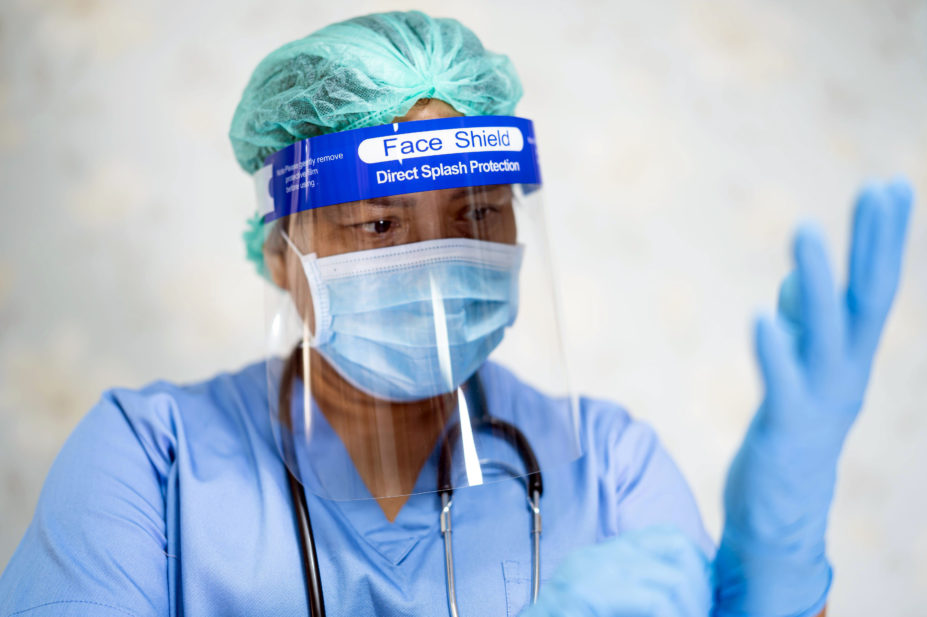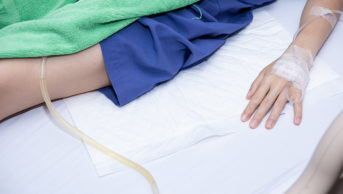
EyeEm / Alamy Stock Photo
Open access article
The Royal Pharmaceutical Society has made this article free to access in order to help healthcare professionals stay informed about an issue of national importance.
To learn more about coronavirus, please visit: https://www.rpharms.com/resources/pharmacy-guides/wuhan-novel-coronavirus
When COVID-19 hit, staff members at Glan Clwyd Hospital in Denbighshire, Wales, rushed to take extra measures for the best possible protection for us and our patients.
One of these measures was staff donning two pairs of gloves. At the time, there was no evidence to support this measure, but personal protective equipment (PPE) requirements were changing regularly and staff members did what they thought was best. (However, it should be noted at this point that “double gloving is NOT recommended [by Public Health England] for routine clinical care of COVID-19 cases”).
Pharmacy staff were forced to physically go to wards to check supplies, potentially risking being exposed to COVID-19 and using additional PPE
PPE shortages often meant wearing gloves that were ill-fitting and bulky, and the double layers made using touchscreens more cumbersome and potentially less accurate.
The problem was critical. Interacting with the hospital’s automated dispensing system — Medi365 (TouchPoint Medical) — via its touchscreen was hampering our ability to gain access to critical medication for patients in the intensive care unit.
Staff members soon found themselves resorting to quick fixes, such as leaving the drawers of the medication storage system open to enable faster access. But this created a different set of problems: those of us in the pharmacy were then unable to track inventory that was being removed from the already opened drawers.
The possibility of wards running out of these critical medicines became a serious concern. Plus, without the usual automated inventory monitoring, pharmacy staff were forced to physically go to wards to check supplies, potentially risking being exposed to COVID-19, and using additional PPE that was already in short supply.
I also worried about the possibility of staff being injured by open drawers being in the way, or the potential for the drawers to come out completely, spilling their contents or becoming broken.
Eventually, the entire situation became untenable and created significant anxiety among the staff, who were already dealing with high levels of stress. We needed a remedy quickly, so I asked TouchPoint Medical for help; we urgently needed a way to continue to execute fast, safe, and efficient medication retrieval in the crisis environment of the pandemic.
Fortunately, I encouraged the leadership team at Glan Clwyd Hospital and TouchPoint Medical to collaborate with me to find this better approach. Our team was impressed with the manufacturer’s responsiveness and their willingness to work on customising a solution.
TouchPoint quickly provided a stylus to be implemented with the touchscreen that would accommodate the staff wearing necessary PPE while maintaining accuracy. To ensure it did not get lost, the stylus had a makeshift holder and chain attached to the machine we used while we waited for the company to develop a more permanent solution.
With teamwork, and by accelerating some of the usual hospital processes owing to the critical nature of the situation, five days later we had a stylus adapted to the Medi365 medication cabinets on our urgent care wards.
We did have one challenge in that the engineers were unable to access the machines directly owing to the PPE requirements, so the stylus was fitted by the pharmacy team.
Our healthcare professionals are with pleased the stylus’s performance and they have been relieved to use the medication dispensing system quickly and accurately without removing their gloves, so they can protect themselves and others and all times. We can avoid potential delays in accessing urgently needed medications, allowing the pharmacy to continue to monitor critical inventory.
Before the pandemic, we never would have needed a tool like this: a whole ward had never previously required full PPE, and staff would always have removed their gloves before entering the drug preparation area. But we have fully adapted to work amid the virus, and we’re now proofed for the future.
Catherine Pollard, pharmacist team leader, unscheduled care, Glan Clwyd Hospital, Wales


